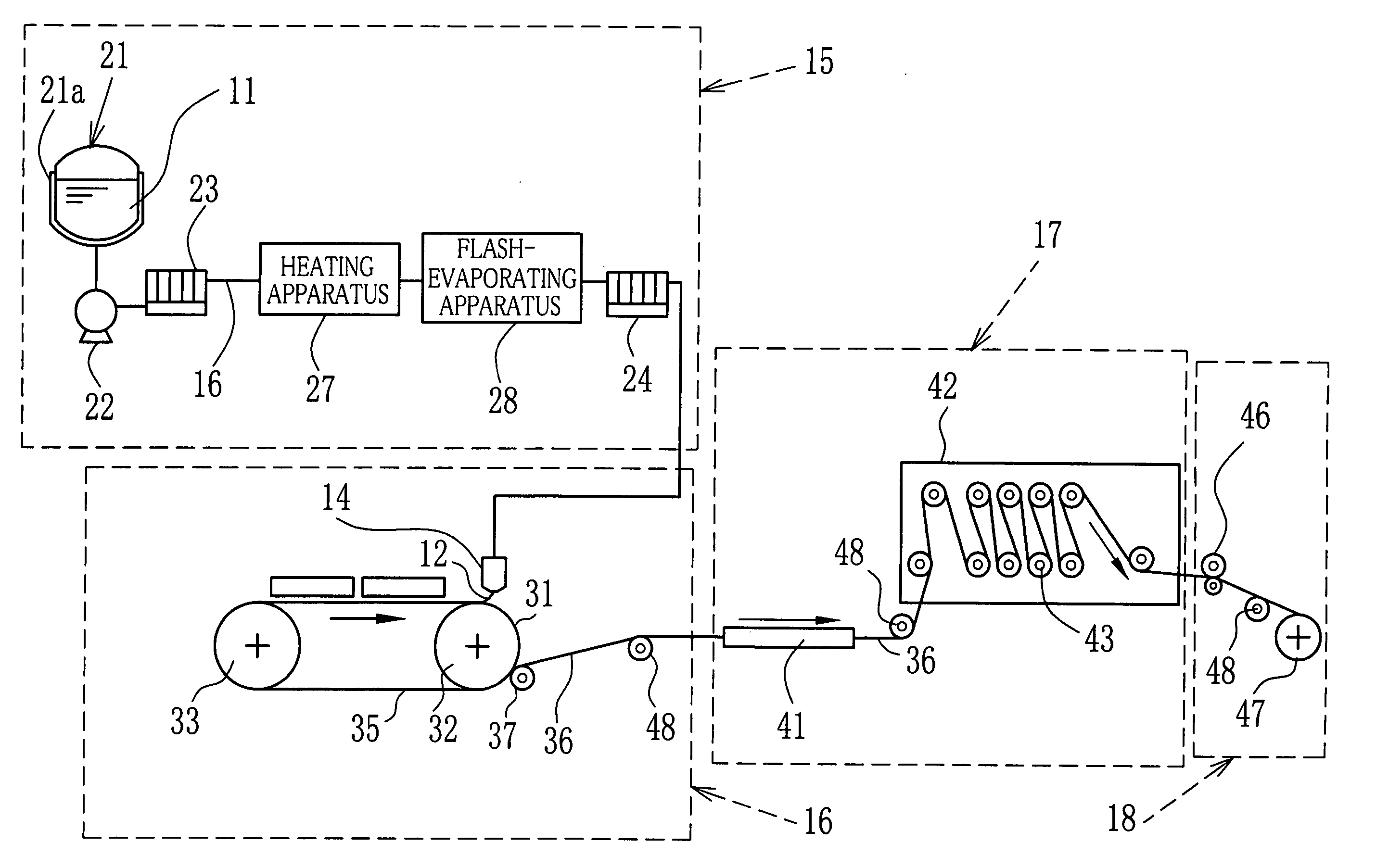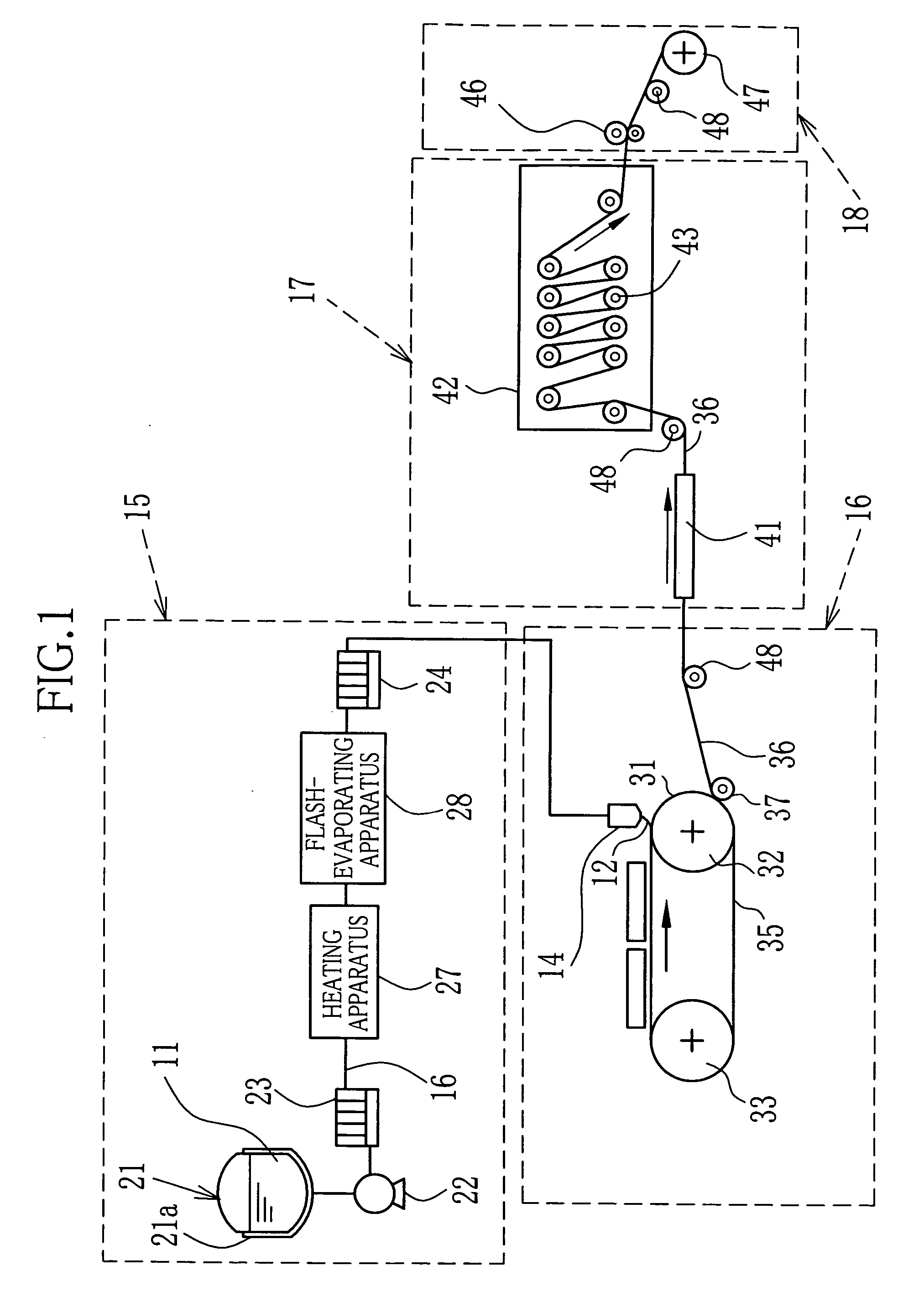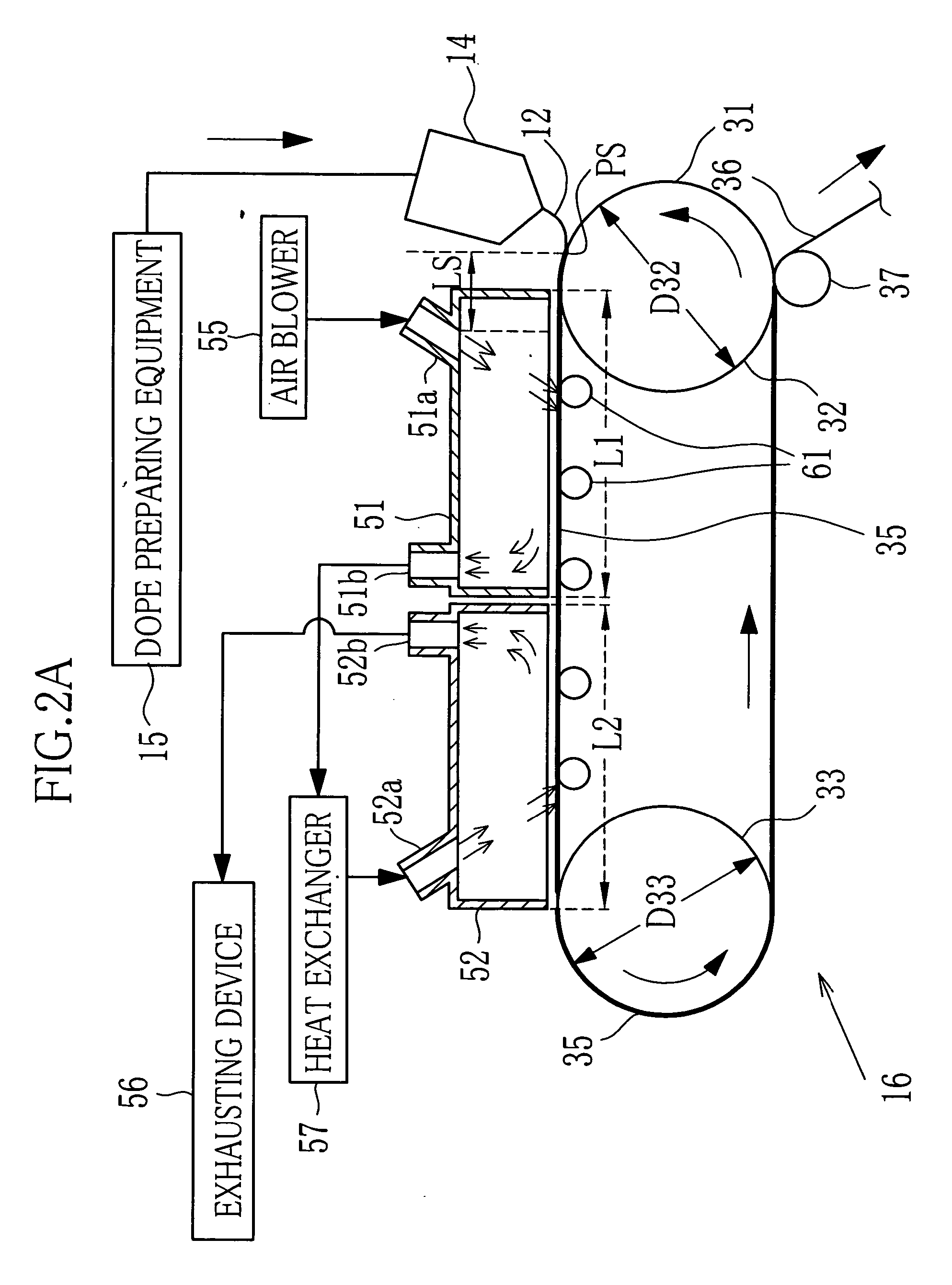Method of producing film from polymer solution
a technology of polymer solution and film, which is applied in the direction of instruments, polarising elements, other domestic objects, etc., can solve the problems of insufficient productivity improvement, inability to control the thickness uniformity of the produced film with high accuracy, and the quality of the image displayed by the lcd becomes extremely wors
- Summary
- Abstract
- Description
- Claims
- Application Information
AI Technical Summary
Benefits of technology
Problems solved by technology
Method used
Image
Examples
example 1
[0109] A dope A is prepared to have the following content. Note that the raw materials of cellulose triacetate is wood pulp, and the UV-absorbing agents I, II, III are respectively 2-(2'-hydroxy-5'-methylphenyl)benzotri-azol, 2,2'-hydroxy-4-methoxybenzophenon, and 2(2'-hydroxy-3',5'-di-tert-bu-tylphenyl)-5-chlorobenzotriazol.
1 Cellulose triacetate 18.90 pts. wt. (degree of acetylation, 60.7%, degree of polymerization 315, degree of substitution for acetyl group at 6 position 0.94, averaged diameter of particle 0.5 mm) Triphenylphosphate (TPP) 1.00 pts. wt. Biphenyldiphenylphosphate (BDP) 0.60 pts. wt. Diethylphthalate 0.50 pts. wt. UV-absorbing agent I 0.10 pts. wt. UV-absorbing agent II 0.20 pts. wt. UV-absorbing agent III 0.30 pts. wt. particles of silicon dioxide 0.05 pts. wt. (particle diameter 15 nm, mohs hardness about 7) partial ester form of ethyl citrate 0.02 pts. wt. tribenzylamine 0.30 pts. wt. methylene chloride 60.90 pts. wt. methanol 15.60 pts. wt. ethanol 1.20 pts. wt...
example 2
[0118] (Preparation of Dope B)
[0119] Methylene chloride is used instead of silicon dioxide particle which is used for preparation of the dope B.
[0120] (Preparation of Dope C)
[0121] The content of the cellulose triacetate is decreased to 17.0 wt. %, and methylene chloride corresponding to the decreased content of the cellulose triacetate is added. Thus the dope C is prepared.
[0122] The casting is made with use of the casting equipment as illustrated in FIG. 7. The same parts and members are provided with the same numbers. The casting speed is 40 m / minute, and the casting die 14 is provided with a feed block 14a for performing the co-casting. Further, a third drying unit 53 is disposed downstream from the second drying unit 52 and positioned from above the second drum 33 to below the first drum 32. The dopes B and C are cast onto the belt 31, such that the dope B may form a main layer of 35 .mu.m in thickness in the dried film, and the dope C may form a front surface layer (a surface ...
example 3
[0125] A dope D is prepared to have the following content. Note that the raw materials of cellulose triacetate is wood pulp and cotton linter whose mixture ratio in mass is 3:7. Further, water content is 0.2% by mass, and a viscosity of 6% in mass of methylene chloride solution is 305 mPa.multidot.s. Further, the UV-absorbing agents IV, V, VI are respectively 2,4-bis-(n-octylthio)-6-(4-hydroxy-3,5-di-tert-butylanylino)--1,3,5-triazine, 2(2'-hydroxy-3',5'-di-tert-butylphenyl)-5-chlorobenzotria-zol, and 2(2'-hydroxy-3',5'-di-tert-amylphenyl)-5-chlorobenzotriazol. Note that water content of each methyl acetate, acetone, methanol, ethanol as the solvent is at most 0.2 wt. %.
2 Cellulose triacetate 16.00 pts. wt. (degree of acetylation 2.83, viscosity average degree of polymerization 205, degree of substitution for acetyl group at 6 position 0.96,) Triphenylphosphate (TPP) 0.50 pts. wt. Dipentaerythrithol hexaacetate 1.50 pts. wt. UV-absorbing agent IV 0.10 pts. wt. UV-absorbing agent V 0...
PUM
| Property | Measurement | Unit |
|---|---|---|
| angle | aaaaa | aaaaa |
| area | aaaaa | aaaaa |
| temperature | aaaaa | aaaaa |
Abstract
Description
Claims
Application Information
 Login to View More
Login to View More - R&D
- Intellectual Property
- Life Sciences
- Materials
- Tech Scout
- Unparalleled Data Quality
- Higher Quality Content
- 60% Fewer Hallucinations
Browse by: Latest US Patents, China's latest patents, Technical Efficacy Thesaurus, Application Domain, Technology Topic, Popular Technical Reports.
© 2025 PatSnap. All rights reserved.Legal|Privacy policy|Modern Slavery Act Transparency Statement|Sitemap|About US| Contact US: help@patsnap.com



